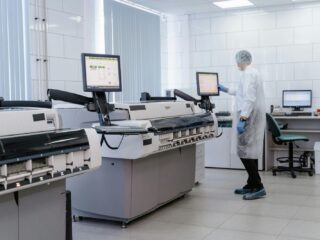
Have you ever wondered about the innovative ways we can tackle mental health challenges? Transcranial Magnetic Stimulation (TMS) therapy might be the answer you’re looking for. This cutting-edge treatment is making waves in the field of mental health, offering new hope to those dealing with depression, anxiety, and obsessive-compulsive disorder (OCD). Imagine a procedure that doesn’t involve surgery or anesthesia but instead uses electromagnetic pulses to stimulate specific areas of your brain. Sounds intriguing, right? By targeting regions such as the left prefrontal cortex, TMS seeks to address the chemical imbalances commonly associated with these conditions. It’s a non-invasive approach that’s gaining traction for its safety and effectiveness, providing an alternative for individuals who haven’t found relief through traditional methods. Let’s dive into how TMS therapy works and why it might be the game-changer you’ve been searching for.
Understanding TMS Therapy
According to experts at PTC PSYCHIATRY TREATMENT CENTERS®, Transcranial Magnetic Stimulation (TMS) therapy is a groundbreaking approach in the realm of mental health treatment, offering hope to individuals grappling with depression, anxiety, and obsessive-compulsive disorder (OCD). This non-invasive procedure utilizes electromagnetic pulses to stimulate specific areas of the brain, particularly the left prefrontal cortex, which is associated with mood regulation. By targeting this region, TMS aims to correct chemical imbalances that often underlie these mental health conditions. The therapy’s non-invasive nature means it doesn’t require surgery or anesthesia, making it a safer alternative for many patients.
Approved by the FDA since 2008 for treating depression, TMS has expanded its reach over the years to include anxiety disorders and severe OCD. Its effectiveness lies in its ability to promote neuroplasticity—the brain’s capacity to reorganize itself by forming new neural connections. This process helps alleviate symptoms by encouraging the brain to adopt healthier patterns of behavior and emotional regulation. Patients undergoing TMS can expect a series of sessions where they sit comfortably and receive treatment. At the same time, electromagnetic pulses are delivered painlessly and non-invasively. The benefits of TMS are numerous:
- Non-invasive: No need for surgical procedures or recovery time.
- FDA-approved: Recognized for its safety and efficacy in treating mental health conditions.
- Encourages neuroplasticity: Helps the brain form new pathways for improved mood regulation.
This innovative therapy continues to be a beacon of hope for those who have found little relief from traditional treatments, offering a path toward improved mental well-being without the lasting side effects often associated with medication.
How Does TMS Therapy Work?
Transcranial Magnetic Stimulation (TMS) therapy is a fascinating process that leverages the power of electromagnetic pulses to target specific areas of the brain. These pulses are directed at the left prefrontal cortex, a region associated with mood regulation. By doing so, TMS aims to correct chemical imbalances that often contribute to depression and anxiety. The procedure is akin to an MRI scan but focuses on stimulating brain cells to produce chemicals that can improve mental health conditions. This non-invasive approach is not only safe but also free from lasting side effects, making it an appealing option for those seeking relief from persistent symptoms.
The magic behind TMS lies in its ability to promote neuroplasticity, which is the brain’s remarkable capacity to adapt and reorganize itself. Neuroplasticity allows the brain to form new connections and pathways, essentially rewiring itself for better emotional regulation. Encouraging this positive plasticity through TMS enables individuals to exhibit healthier behaviors and emotions more easily. In essence, TMS therapy trains the brain to manage emotions more effectively, offering a promising avenue for those struggling with depression and anxiety. By fostering these changes, TMS provides a pathway toward long-term mental wellness.
Success Rates of TMS Therapy
Transcranial Magnetic Stimulation (TMS) therapy has emerged as a promising treatment for depression and anxiety, boasting impressive success rates. Studies indicate that the effectiveness of TMS therapy ranges between 70% to 80%, meaning that a significant majority of patients experience relief from their symptoms after undergoing this non-invasive procedure. In comparison, traditional antidepressant medications often have a lower success rate, with some studies suggesting an average effectiveness of around 27.5%. This stark contrast highlights TMS as a viable alternative, especially for individuals who have not responded well to conventional treatments.
Several factors can influence the success rates of TMS therapy on an individual level. Age plays a role, with younger patients often experiencing more favorable outcomes. Personality traits, such as tenacity, may also impact how quickly one responds to treatment. Additionally, those who are resistant to antidepressant medications might find TMS particularly beneficial. It’s worth noting that combining TMS with ongoing antidepressant use can enhance results due to the synergistic effects of both treatments. While TMS is not suitable for everyone—such as individuals with a history of seizures or metal implants in the head—it remains a powerful option for many seeking relief from persistent mental health challenges.
Duration and Longevity of TMS Results
Transcranial Magnetic Stimulation (TMS) therapy offers a promising avenue for those battling depression and anxiety, but how long do its effects truly last? After completing a typical course of TMS treatment, which usually spans four to six weeks, many patients experience significant relief from their symptoms. This relief can persist for an impressive duration, often lasting between six to twelve months. While TMS is not a permanent cure, it provides a substantial reprieve from the burdens of mental health challenges. It’s important to note that the longevity of these effects can vary among individuals, influenced by factors such as the severity of symptoms and personal health conditions.

For some, the journey with TMS doesn’t end after the initial treatment course. There might be instances where symptoms gradually return, necessitating further intervention. Maintenance sessions or additional courses of TMS may be recommended to sustain the positive outcomes. Patients often find that these follow-up treatments help in maintaining their mental well-being over time. It’s also worth considering complementary approaches, such as lifestyle changes or therapy, alongside TMS to enhance and prolong the benefits. Here’s what you might consider:
- Maintenance Sessions: Periodic booster sessions can help maintain symptom relief.
- Lifestyle Adjustments: Incorporating exercise and a balanced diet may support mental health.
- Therapeutic Support: Engaging in talk therapy or mindfulness practices can complement TMS effects.
By understanding the potential need for ongoing management, individuals can better prepare for their mental health journey with TMS therapy.
What to Expect During a TMS Session
When you arrive for a TMS session, you’ll find it to be a straightforward and comfortable experience. Typically, a session lasts approximately 19 to 20 minutes, making it easy to fit into your daily routine with minimal disruption. During the procedure, you’ll sit in a cozy chair while a licensed psychiatrist supervises the treatment. The process involves delivering electromagnetic pulses to specific areas of your brain, which might sound intimidating, but most patients report only mild sensations. You may feel a slight tapping on your head or experience tingling sensations, but these are generally well-tolerated.
One of the significant advantages of TMS therapy is its outpatient nature. This means you can walk in for your session and leave immediately afterward without any need for recovery time or hospital stay. Unlike other treatments that might require anesthesia or have systemic side effects, TMS is non-invasive and has minimal side effects. Some people may experience minor discomfort, such as headaches or jaw pain, but these are usually temporary and resolve quickly. Overall, TMS offers a convenient and low-impact option for those seeking relief from depression and anxiety symptoms.
When TMS Might Not Work
While Transcranial Magnetic Stimulation (TMS) therapy boasts a high success rate, it’s essential to recognize that it may not be the ideal solution for everyone. Some individuals may not experience the desired relief from their symptoms after an initial course of TMS treatment. This can be due to various factors, such as the unique nature of their depression or anxiety, or how their brain responds to the therapy. However, if you find yourself in this situation, don’t lose hope. There are alternative strategies available that can complement TMS or serve as other viable options.
For those who do not respond to TMS alone, combining it with other treatments can enhance its effectiveness. Here are some alternatives you might consider:
- Medication: Pairing TMS with antidepressants or anti-anxiety medications can sometimes produce better results than either treatment alone.
- Psychotherapy: Engaging in talk therapy or cognitive behavioral therapy alongside TMS may provide additional support and coping mechanisms.
- Lifestyle Changes: Implementing changes such as a healthier diet, regular exercise, and stress management techniques can contribute to overall well-being and improve treatment outcomes.
- Other Therapies: Exploring options like ketamine treatment or electroconvulsive therapy may offer relief for those with treatment-resistant depression.
Remember, finding the right combination of treatments is often a personalized journey. Consulting with your healthcare provider will help tailor an approach that best suits your individual needs and circumstances.
Summary
Transcranial Magnetic Stimulation (TMS) therapy is revolutionizing mental health treatment by offering a non-invasive solution for conditions like depression, anxiety, and OCD. This innovative approach utilizes electromagnetic pulses to stimulate the left prefrontal cortex of the brain. This region plays a crucial role in regulating mood. By targeting this area, TMS seeks to address chemical imbalances that often contribute to these disorders. Since it doesn’t involve surgery or anesthesia, TMS is considered a safer alternative for many patients seeking effective treatment without the risks associated with more invasive procedures.












